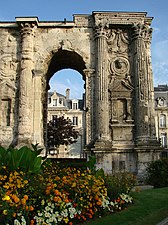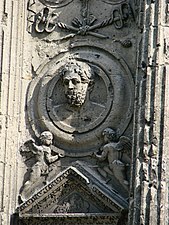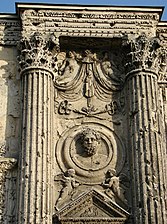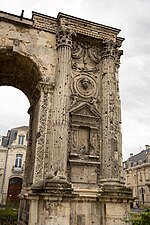This article has multiple issues. Please help improve it or discuss these issues on the talk page . (Learn how and when to remove these messages)
|

Porte de Mars (Gate of Mars) is an ancient Roman triumphal arch in Reims, France. [1] It dates from the third century AD, and was the widest arch in the Roman world. [2] [3]









